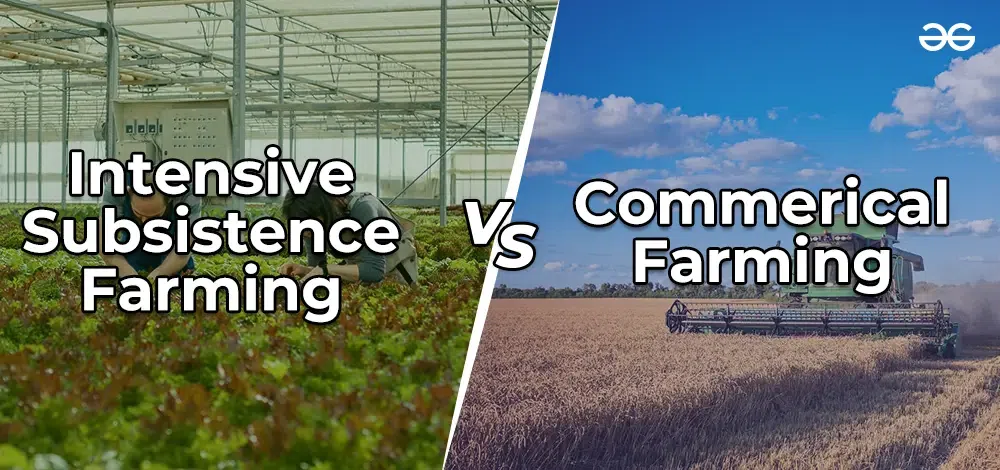The Economic Viability of Commercial Farming vs Subsistence Farming in Rural Areas
The Economic Viability of Commercial Farming vs Subsistence Farming in Rural Areas
Blog Article
An Extensive Consider the Difficulties and Advantages of Modern Farming
Modern farming stands at the crossroads of advancement and sustainability, presenting a wide range of chances and challenges. The course ahead demands a mindful assessment of these dynamics, welcoming stakeholders to think about the potential for transformative adjustment in agricultural practices and plans.
Technical Improvements in Farming
Innovations such as precision biotechnology, automation, and agriculture have changed typical farming methods, permitting for more sustainable and rewarding procedures. Precision farming utilizes GPS innovation, sensing units, and data analytics to maximize field-level administration concerning plant farming.
Automation in farming has better thrust the market forward, with the intro of self-governing tractors, drones, and robotics. These modern technologies reduce labor demands and raise functional speed, enabling timely planting and harvesting. Drones, particularly, supply useful airborne imagery and data, helping farmers in checking plant wellness and spotting problems early.
Biotechnology has likewise played an essential duty ahead of time farming methods. Genetically customized organisms (GMOs) have been created to improve plant resistance to insects and conditions, decrease reliance on chemical therapies, and boost nutritional content. This modern technology contributes to food protection and meets the demands of an expanding worldwide population. Jointly, these technical advancements have prepared for an extra sustainable and durable agricultural future.
Ecological Difficulties
Farming deals with several environmental challenges that endanger its sustainability and performance. The long-term practicality of farming land is endangered, demanding the adoption of more sustainable methods.
Water deficiency is an additional significant difficulty, specifically in areas where agriculture heavily counts on watering. Climate modification is magnifying this problem, modifying precipitation patterns and boosting the frequency of droughts. Effective water monitoring systems, such as drip irrigation and rainwater harvesting, are important to minimize these effects, but their application stays unequal throughout various areas.
Additionally, farming is both a victim and a contributor to climate modification. It represents a significant share of greenhouse gas emissions, mainly from livestock production and rice growing. Transitioning to low-emission farming techniques, such as accuracy farming and agroforestry, can aid reduce this impact. However, these approaches need considerable investment and technological proficiency, posing an obstacle to prevalent adoption. Attending to these environmental obstacles is crucial for making sure a sustainable farming future.

Financial Effects
The economic effects of modern-day agriculture are extensive and complex, affecting both local and worldwide markets. Breakthroughs in innovation and manufacturing approaches have substantially raised farming efficiency, leading to much more efficient food supply chains and decreased costs for consumers.
The capital-intensive nature of contemporary farming calls for considerable financial investment in machinery, plant visit our website foods, and genetically changed seeds, which can be economically burdensome for small-scale farmers. Furthermore, international market changes can impact the success of farming exports, making economic climates reliant on farming susceptible to financial instability.
Moreover, subsidies and trade plans in industrialized countries can distort market value, influencing affordable balance and possibly disadvantaging farmers in developing nations. Overall, while contemporary agriculture drives economic development, it likewise demands navigating complicated financial landscapes to make sure lasting and equitable advancement.
Social Effects
While modern agriculture has actually brought around substantial advancements, it additionally presents various social implications that require consideration. As business farming entities progressively dominate the agricultural landscape, smaller farms typically have a hard time to contend, leading to the erosion of rural communities and traditional farming practices.

Such techniques might also restrict consumer options and reduce the ability of neighborhood communities to control their food resources. As these social ramifications unravel, it ends up being essential to resolve them to make sure equitable and lasting farming advancement.
Future Instructions
Looking in advance, numerous promising avenues for contemporary farming could resolve the challenges dealt with other today while cultivating sustainable growth. Breakthroughs in technology, such as precision agriculture, provide the prospective to maximize source usage and rise performance.
Biotechnology additionally holds enormous promise for the future of agriculture. Genetically customized microorganisms (GMOs) and genetics editing methods, like CRISPR, could boost crop durability against climate modification, insects, and diseases, thus boosting food security. Moreover, expanding plant ranges to include even more climate-resilient and nutrient-dense alternatives might reinforce both ecological security and human nourishment.

Verdict
Modern farming, defined by technological advancements, offers both challenges and possibilities. While technologies such as precision farming and biotechnology enhance performance and sustainability, they likewise contribute to ecological problems like soil destruction and water shortage. The financial effects are considerable, leading and impacting small farmers to more comprehensive social ramifications. Addressing these intricacies requires a change towards lasting practices that stabilize efficiency with environmental stewardship and social equity, consequently guaranteeing a resistant future for worldwide farming systems.
Modern farming stands at the crossroads of innovation and sustainability, providing a plethora of challenges and chances. Furthermore, worldwide market variations can impact the success of farming exports, making economic situations reliant on agriculture vulnerable to economic instability.
Additionally, the extensive usage of technology and mechanization in agriculture has led to a decline in farming work opportunities.Looking ahead, a number of encouraging methods for modern agriculture can deal with the difficulties encountered today while cultivating image source sustainable growth. commercial farming vs subsistence farming.Modern agriculture, characterized by technological innovations, presents both opportunities and challenges
Report this page